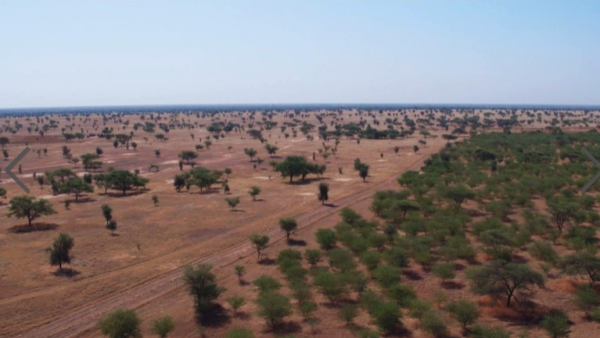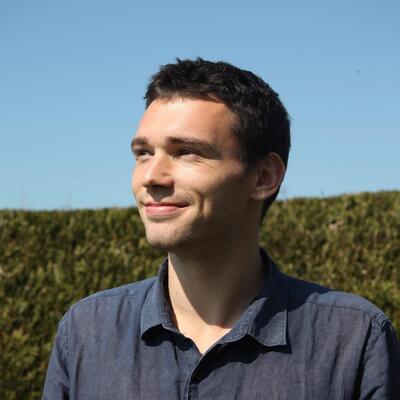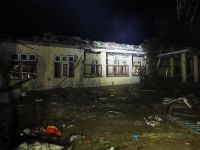According to a leading scientist involved with the project, there is a risk that any advancements made over the coming decade will be totally void after two years. “If we continue to do business as usual we might be disappointed in the end,” Deborah Goffner, research director in plant biology at France's CNRS and a key figure in resource management on projects linked with the GGW, told Al Bawaba News.
The GGW is aiming to build an 8,000km long and 15km wide patchwork of trees, grasslands, vegetation and plants across the Sahel, an area of semi-arid land on the southern edge of the Sahara desert. The wall, reaching from Senegal in the west to Djibouti in the east, aims at preventing the encroachment of the Sahara onto land in the Sahel.
When the project began more than 13 years ago, the aim was to restore 100 million hectares of land by 2030. Funds ran dry, however, and between 2007 and 2019 only 4 million hectares had been restored. Around $33bn is needed to reach the target by 2030. On 11 January 2021, France pledged $13bn, with other funding coming from countries along the GWW route and international organisations. The World Bank has promised a further $5bn.
The wall, reaching from Senegal in the west to Djibouti in the east, aims at preventing the encroachment of the Sahara onto land in the Sahel.
“Large-scale projects look great when you’re at the global level: ‘we’re going to plant millions of hectares of trees and that’ll be great for the environment.’ The problem is: it just doesn’t work like that. You can’t come up with a one-size-fits-all for the Sahel. You have areas that are more urban than others, some have greater access to roads and water than others. There are so many considerations that go into what one does on the ground. When you’re on the ground you’re designing actions at the landscape level anyhow. You can’t imagine planting millions of hectares of trees just anywhere.
“Another problem is that, in many places along the Green Wall, the planted trees just don’t survive. This was another eye-opener which shouldn’t have been an eye-opener for decision makers.” The survival of trees depends on the soil, water, and a variety of other environmental factors. In some areas, it’s possible to see up to 90% survival rates for certain tree species but in others, survival rates are, at best, 15-20%. Some areas where massive tree planting was carried out in Senegal had extremely low survival rates. In these areas, through experimental research, we were able to show that natural regeneration is clearly a more appropriate and efficient solution to increase biomass and biodiversity in these areas.”
“Large-scale projects look great when you’re at the global level: ‘we’re going to plant millions of hectares of trees and that’ll be great for the environment.’
The roots of the GGW are in the politics of Thomas Sankara, Burkina Faso’s socialist president from 1983 to 1987, who saw an environmental crisis hitting his country. Referring to Burkina Faso’s once highly fertile land, in 1985 Sankara said: “Back then, it was the roots of our trees and grass that bound together the soil’s fertile humus, withstanding the force of torrents and floods.”
Sankara recognized, however, that the changing climate was starting to threaten food production. The desert is at our gates, it’s already upon us, ready to engulf us,” Sankara said.
“There appears to be some conditions associated with the new round of funding in that the leadership will shift a bit and be more international, in more close association with the UNCCD. They’ve always played a role in the Green Wall project but I don’t know to what extent this could compromise the sovereignty for the different countries to do what they want to do.”
“Money is only one of the leverage points for the success of the Green Wall. There is a lot of development money already floating around in the Sahel, and the risk is that there won’t be incentives to innovate. People looking from the global scale think that we should just plant trees and that’s all we should do. In fact, this is an area that is highly populated, with extensive livestock herding as the principal livelihood, and planting trees is good but only part of the solution.”
“Money is only one of the leverage points for the success of the Green Wall.
The billions of dollars invested in the GWW need to be one so diverseley, tapping into a range of academic, scientific, and local sources of knowledge. A rush for the 2030 target could leave the majority of planned trees dead after less than half a decade. Asked whether she believes that the GGW is a good model for future environmental projects, Goffner said “it would be lying to ourselves to believe it’s a good model, but from a theoretical standpoint it’s a good model.” Goffner remains hopeful that if money is allocated in the correct way and if the needs of local people are acknowledged, the GGW could still be a success.









